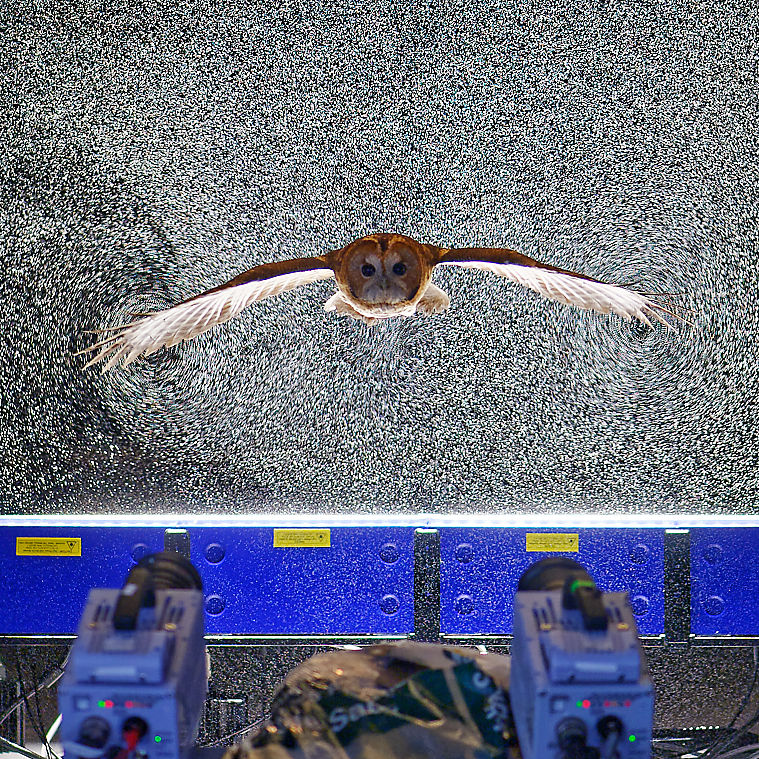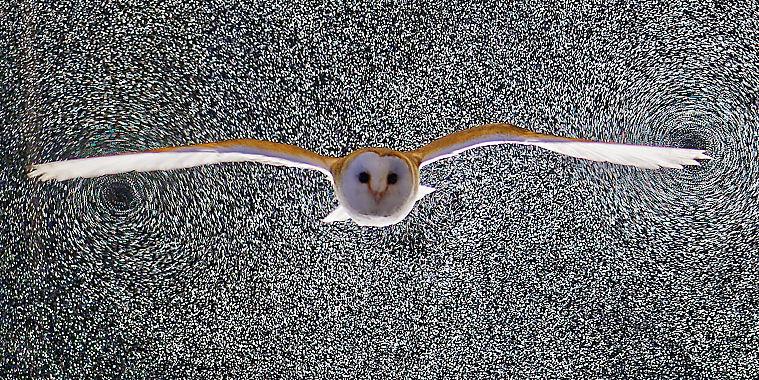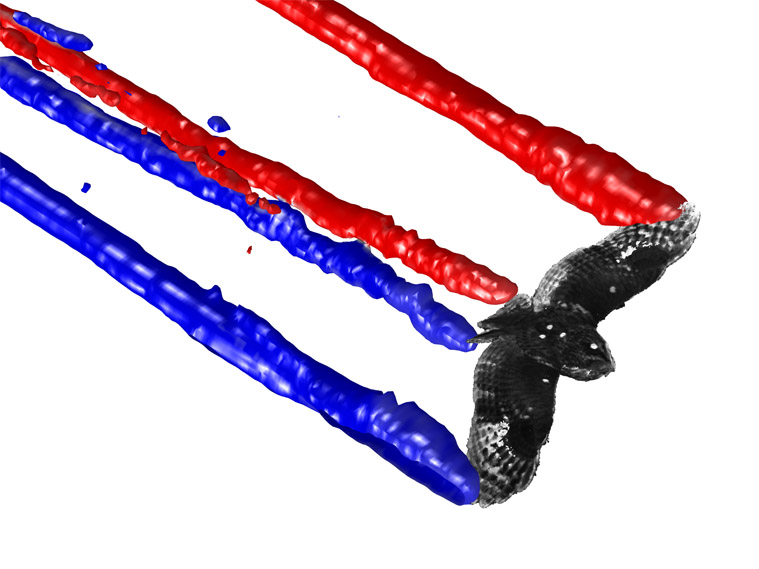Birds in flight share lessons for future aircraft designs

Research from RVC shows how bird tails reduce drag
There is much still to learn from birds in flight when developing small and more efficient aircraft, a team of scientists at the Royal Veterinary College (RVC) has concluded. In partnership with engineers from LaVision, researchers applied state of the art equipment and measurement techniques to investigate the aerodynamics of gliding birds, finding that they use their tails to minimise drag.
Owls and hawks were filmed gliding through a mist of tiny helium bubbles. Over 20,000 bubbles in the wake were tracked automatically, revealing the ‘aerodynamic footprint’ left by the birds.
Initially, the study produced broadly unsurprising results. Downwash and vortices spinning behind the wingtips of birds are expected from aerodynamic theory and are very familiar behind aeroplanes.
However, the team at RVC were surprised to find a region of extra downwash and another pair of vortices behind the tail. For example, a stable toy glider would show the opposite, producing upwash with the tail for stability; the conventional low-drag answer for big aircraft would be to avoid any extra vortices from the tail at all. The tail feathers of the birds in contrast produced extra lift.
The RVC scientists found that aerodynamics at the relatively small, slow scales of birds is much more influenced by the air’s viscosity – or ‘stickiness’ – than is the case for airplanes. The form of drag associated with viscosity is minimised if lift is spread evenly across the planform area (effectively the bird’s silhouette) and, as birds have tails that stick out, this means that extra lift from the tail is required to reduce the overall drag.
Professor Jim Usherwood, Senior Research Fellow at the RVC and lead author of the paper, said: “What was striking at first was the beauty. For many seconds after the bird had landed, the vortices in the wake kept spinning like bath water going down a plughole. Birds appear to be minimising drag, even if this means they are highly unstable and need to constantly make small adjustments just to glide without crashing.

“Given engineering has largely solved the challenge of rapid sensing, processing and actuation – just think of how stable quadcopters are these days – perhaps it is now time to learn from the birds and think about fixed-wing drone design in terms of drag minimisation. Start making the tails contribute their share of lift production in order to reduce drag.”
Professor Richard Bomphrey, co-author of the paper, has been thinking about the strategies animals use to achieve economical flight for 20 years. He has often worked with LaVision, applying their ground-breaking technologies to some of the more challenging problems of measuring flow patterns behind birds and insects.
Professor Richard Bomphrey, co-author of the paper, said: “Our understanding of birds in flight was used to generate the very earliest aircraft designs. Since then, aeronautical engineering has led to aircraft that are larger and faster – where the viscosity of air becomes less important – and birds have been left trailing in their wake. Now, though, as our attention turns back to smaller and more efficient vehicles, it seems that birds might have a new relevance to future aeronautics.”

Overview
The wakes of gliding raptors were measured by tracking up 20,000 tiny (0.3mm) helium-filled soap bubbles. Swirling vortices trailing behind the wing tips are as expected, associated with downwash and aerodynamic lift providing weight support. However, strong additional trailing vortices and extra downwash behind the tail were a surprise; they do not match traditional mechanisms for stability or drag minimisation at aeroplane scales. The measured downwash velocities do match mechanisms of drag minimisation at smaller sizes and speeds relevant to Owls and Hawks. Birds appear willing to sacrifice passive stability in order to glide with minimum overall drag.
Reference
Usherwood, J.R., Cheney, J.A., Song, J., Windsor, S.P., Stevenson, J.P.J., Dierksheide, U., Nila, A. and Bomphrey, R.J. (2020). High aerodynamic lift from the tail reduces drag in gliding raptors.J. Exp. Biol. 223. doi: 10.1242/jeb.214809
The full paper will be available from Feb 10, 2020 at: https://doi.org/10.1242/jeb.214809
Links to final proof are available at: https://drive.google.com/open?id=1R5yyow4TO20I9eBTrlVnCzzX9IIIoews
Notes to Editors
For more information please contact:
- Jasmin De Vivo (Jasmin.DeVivo@plmr.co.uk)
- Press Line: 0800 368 9520
About the RVC
- The Royal Veterinary College (RVC) is the UK's largest and longest established independent veterinary school and is a Member Institution of the University of London. It was the first in the world to hold full accreditation from AVMA, EAEVE, RCVS and AVBC.
- The RVC is ranked as the world’s number one veterinary school in the QS World University Rankings by subject, 2019.
- The RVC offers undergraduate and postgraduate programmes in veterinary medicine, veterinary nursing and biological sciences.
- In 2017, the RVC received a Gold award from the Teaching Excellence Framework (TEF) – the highest rating a university can receive.
- A research led institution with 79% of its research rated as internationally excellent or world class in the Research Excellence Framework 2014.
- The RVC provides animal owners and the veterinary profession with access to expert veterinary care and advice through its teaching hospitals and first opinion practices in London and Hertfordshire.
You may also be interested in:
-
How changing limb posture helped ancient reptiles grow
New collaborative research from the Royal Veterinary College (RVC), along with the Institute of …

